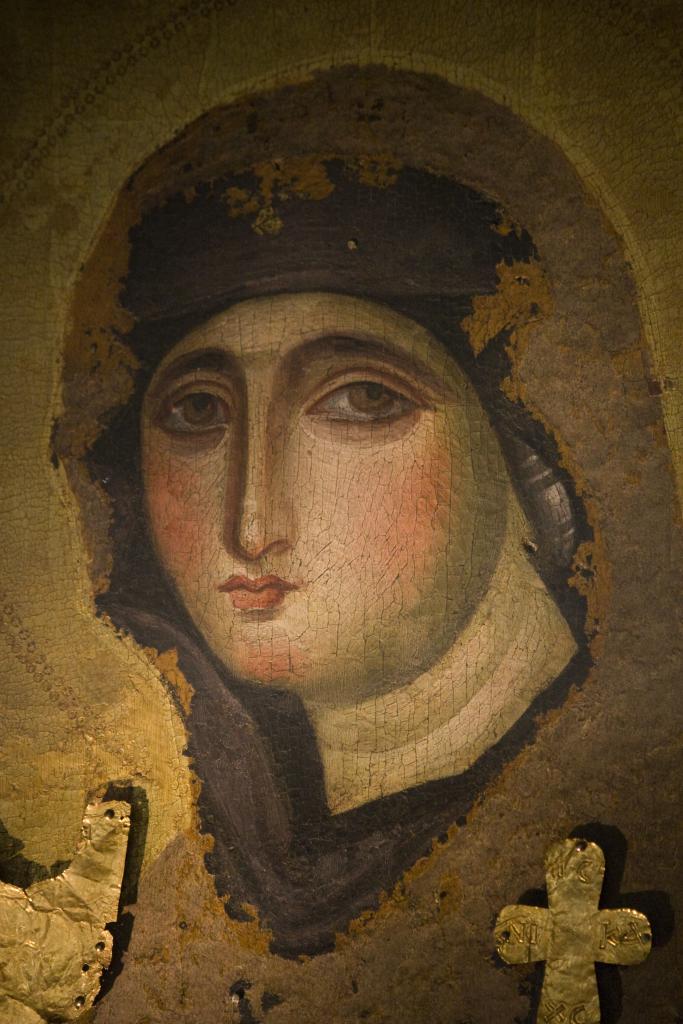by Fr Lawrence Lew OP
Almost a decade ago, when I was in Rome for a General Chapter of the Dominican Order, I was invited to visit the Dominican nuns in their monastery on Monte Mario, close to the Vatican. I had little idea of the treasures safeguarded by the nuns in their monastery, nor did I realise that a precious icon was venerated in their church. I had gone as a matter of curiosity because I had never met Dominican cloistered nuns, and the immediate excuse for this visit was to accompany a major relic of St Dominic that we needed to return to the nuns’ monastery.
When we had returned the relic, the nuns invited us to see the recently-restored icon of the Madonna of San Sisto, who was also called the Advocata, although the Russian Orthodox called her the Lyddan Madonna. The icon itself is radiantly beautiful, with Mary’s cheeks aglow with a gentle pink blush, as though it were a living image. But what captures one’s attention, and gazes with motherly tenderness into the depths of one’s soul, are the eyes. Immediately, I recalled the words of the Salve Regina: ‘turn them, most gracious Advocate, thine eyes of mercy towards us’. I photographed the icon as best as I could, and when I had returned to my room I did some research into the sacred image.
I was amazed to discover that this icon was the miraculous image that St Dominic had picked up and moved in 1221.
At that time, the Benedictine nuns who had guarded the icon in their monastery in Rome (at Santa Maria in Tempulo, in Trastevere) decided to become Dominican nuns. They were told to join the Dominican nuns in their existing convent, across the Tiber, in San Sisto, not far from the Colosseum. However, the nuns would not leave their monastery in Trastevere without their beloved icon. A few hundred years before, in the early 900s, Pope Sergius III had transferred the icon to his cathedral on the Lateran hill, but, to the astonishment of all, the icon returned to Santa Maria in Tempulo the next day! The nuns were understandably concerned that even if they went to San Sisto, the icon would remain behind. So, St Dominic took matters into his own hands, and picking up the icon, he led the nuns in procession to San Sisto, and there it remained until the Dominican nuns moved to the Quirinal Hill in 1575, and finally in 1931 to its current home on the hill of Monte Mario.
However, I recently came across a book that detailed the even more wonderful provenance of this icon. Michael Hesemann in Mary of Nazareth (Ignatius Press, 2016) explains that the icon is painted in the encaustic method that was developed in ancient Egypt. This involves suspending pigments in a mixture of molten wax and mastic (an aromatic resin) and this is used while it is still hot to paint the image. Very few encaustic icons have survived, and all of them predate the 6th century because the technique was subsequently lost and many such icons were destroyed in the 8th-century during the Byzantine iconoclastic controversy. This suggests that the Advocata icon has an early, pre-medieval dating. Hesemann suggests that the icon in fact predates 431. In that year, the Council of Ephesus had defined the dogma of Mary as Theotokos, God-bearer or Mother of God. Henceforth icons of Mary would be painted with Our Lady bearing the infant Jesus in her arms. The Advocata, rather unusually, depicts Mary by herself. Thus, it seems to be earlier than the Council of Ephesus. Thirdly, art historians note that although the technique of the icon is Egyptian, the style of the painting with its rounded face and large round eyes is distinctively Syrian.
Radiocarbon tests carried out in the 1960s then established that the icon dates to the first
century AD.
Perhaps it is a leap of credibility too great for some, but Hesemann explains the historical plausibility that St Luke, a Syrian himself, could well have painted the Advocata icon near a town called Lydda. After all, legends persist that St Luke had painted an image of Mary, and this precious icon, verified by science to be the oldest painted image of Mary, could well be the one.
As I contemplated this possibility, I recalled the many precious relics that the Dominican nuns quietly safeguarded on Monte Mario. There is a fittingness to this for the Salve Regina, which seems to refer so specifically to this icon, is recited at the close of the Rosary, itself another great devotion specially entrusted to the Dominican Order for the edification of the Church. As Preachers of Word who bear the light of the Gospel into the world, it seems that Providence willed to give to the Dominicans not only a marvellous means of meditating on the mysteries of salvation in the Rosary, but also an image of the one who is the pre-eminent bearer and preacher of the Word, painted even by an Evangelist, one of the original preachers of the Word! Thus equipped, the sons and daughters of St Dominic cannot but contemplate the truth of the Gospel, and then hand on to others the fruit of their contemplation, as a Dominican motto says.




